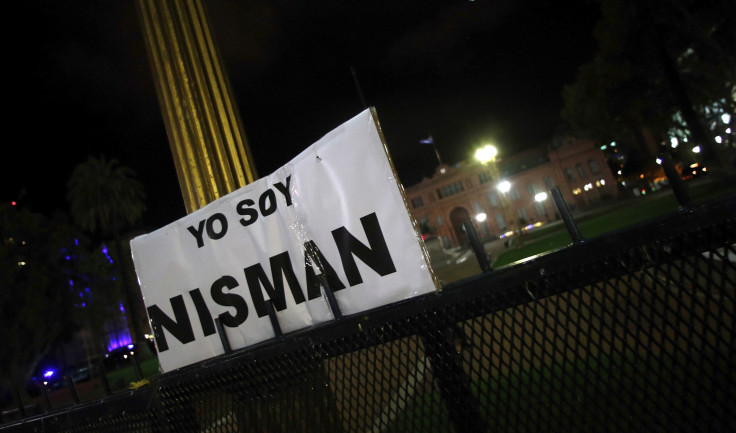Alberto Nisman's Death: Argentina's Intelligence Overhaul Is The Latest In The Puzzle

Argentina’s President Cristina Fernández de Kirchner is preparing a shakeup of the national intelligence agency, the latest move in an increasingly convoluted mystery surrounding the death of federal prosecutor Alberto Nisman. As criticism and scrutiny over Argentina’s intelligence network have swelled in the wake of Nisman’s death, the president said she would scrap the entire body and replace it with a new system.
In an hour-long televised speech Monday night, she said the existing intelligence body, known as SIDE, “has not served national interests.” Fernández announced her support for a draft bill that would dissolve SIDE and create a new federal intelligence agency. The head of the new body would be appointed by the president and confirmed by the Senate, and Congress will debate the bill in February, she said.
Monday evening’s speech was the first public address the president had made since Nisman was discovered dead in his apartment on Jan. 18. He was found with a bullet wound to the head and a .22-caliber gun by his side, a day before he was to present a judge with accusations against the president for an alleged cover-up of Iranian involvement in the 1994 bombing of a Jewish community center.
Members of Fernández’s government have pointed fingers at former intelligence agent Antonio “Jaime” Stiusso, who was fired by Fernández in December, for allegedly feeding Nisman fabricated information for his investigation. Stiusso's role in the tangled affair of Nisman's death has further highlighted the tensions between Argentina's government and the national intelligence apparatus that culminated in Monday's announcement.
The 1994 bombing, which led to 85 deaths and 300 injuries, has been one of Argentina’s most politically sensitive subjects; no one has ever been convicted for the incident. Nisman had indicted several high-ranking Iranian officials, including then-president Akbar Hashemi Rafsanjani, for ordering the attack, but Iran denied the accusations and refused to turn them over.
According to Nisman’s decade-long investigation, based on wiretaps of phone conversations detailed in a 298-page document released by the court last week, Fernández secretly agreed to grant impunity for the Iranians charged, in exchange for oil. Nisman implicated Foreign Minister Héctor Timerman for executing the plan via a Memorandum of Understanding with Iranian officials. On paper, the memorandum established a joint “truth commission” to investigate the bombing -- something Nisman and several other critics had decried -- but Nisman said the oil deal was a secret arrangement behind the agreement.
The president and other members of the Argentine government vehemently denied the allegations, noting that the Iranians’ names were never removed from Interpol’s wanted list. Fernández also initially supported theories that Nisman’s death was a suicide. But in the days following his death, the mystery has taken a series of twists: Fernández later reversed her stance, saying she didn't believe Nisman killed himself and suggested he may have been used as a pawn by other individuals in a plot against the government.
Damián Pachter, the Argentine journalist who first broke the story of Nisman’s death, said Monday that he had fled the country for his safety and was in Tel Aviv.
The scandal has been roiling Fernández’s government as she finishes her second and final term in office before October’s presidential elections. Polls indicate that around 70 percent of Argentines believe Nisman’s death wasn't a suicide.
© Copyright IBTimes 2024. All rights reserved.






















